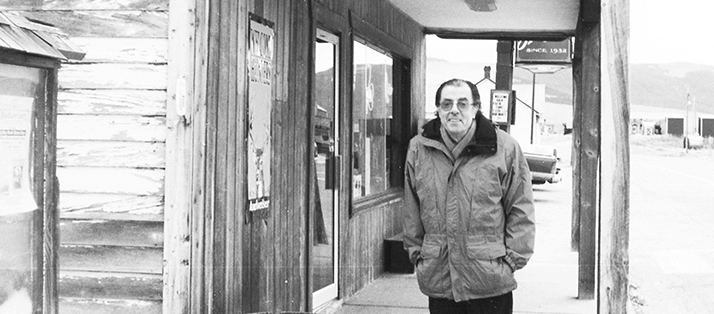
How did you become an analytical chemist?
It’s a strange story. In 1955, after I had graduated with an MS degree in engineering, a professor at the Ecole Polytechnique in Paris offered me a teaching assistant position. I was assigned to study the instability of ammonium nitrate, which had caused several disastrous explosions. About a year into the project, we were visited by a man who was received with respect by the professor. He told us that he thought the hoists on the boats unloading bags of ammonium nitrate were somehow catalyzing the transmutation of nitrogen into CO, and wanted us to study it. When he left I told my boss that it was a crazy idea. “You are right,” he said, “but he is the son-in-law of the Prime Minister. You want a gas chromatograph to analyze the decomposition gasses of ammonium nitrate? Well, this is a way to get it!” He contacted the prime minister’s office – this was in 1956, when there was very little money for scientific research – and within two weeks we had a beautiful PerkinElmer chromatograph. A year later we submitted a report showing that no CO was formed in the decomposition of ammonium nitrate. This drew an irrascible phone call from the government office informing us that the prime minister had changed and they had no interest in it. End of story. But it got me started in gas chromatography.
Where did you go from there? My boss was close friends with a chemist-director of a big company that extracted perfume fragrances from flowers in the south of France. So we started to do gas chromatography with him and did a lot of interesting work. In 1984 I decided to come to the US. There were too many smart people in LC and GC, so I decided to go into something that no-one else was doing seriously – preparative chromatography. Chemical engineers had no idea about the subtleties of the stationary phase, for instance, and analysts had no ideas about chemical engineering. I didn’t have much idea either but I knew enough to marry them together. Computers were starting to play a bigger role and I was able to solve numerically the mass balance equation for mass transfer in chromatography. I published a lot of papers and made my reputation with that. Now I’m doing supercritical fluid chromatography.
What is the satisfaction in science for you? Understanding phenomena, solving problems and training people.
Looking back on your long and prestigious career, what are your favorite moments? Prestigious? I look at personal interactions, and helping people. A large part of the work on nonlinear chromatography was done with a guy from Iran who is now president of a US company. He first came to America in the late 1970s but went home after a year – it was at the time of the crisis at the US Embassy in Tehran. About a year later, a close friend of his was kidnapped and killed by the Iranian police and he returned. At the time I was the most recent professor appointed at Georgetown University so he was assigned to me and I quickly found that he was very smart with good mathematical training but completely unable to write in English. But his equations made sense and there was just about enough writing in between. I have brought people to work with me from Central Europe, Russia, Cuba, Iran, China, and that is what has given me the greatest satisfaction.
What trends do you see in chromatography today? It seems that analytical chemistry in general and chromatography in particular are far less considered than they used to be in the academic world. A number of universities got rid of departments or divisions and there are now very few professors of analytical chemistry in the leading universities. That is bad because it is the science of most regulations – take EPA, take FDA, they have thousands of analytical chemists and spend huge amounts of money to control a third or more of the US economy.
What allowed the breakthrough in preparative chromatography? You need to develop physical chemistry, thermodynamics and mass transfer chemistry to the point where you can predict the result of the separation and optimize the experimental conditions. And you can’t do this without moving from linear to nonlinear, where the equilibrium between the stationary phase and the mobile phase depends on concentration. Generally people work in a concentration range where deviation from linear behavior is negligible, but beyond a certain point the velocity of the band depends on the concentration and instead of being a nice symmetrical band you obtain an asymmetrical band with a very sharp front and a long tailing peak. You cannot avoid this but you have to understand and be able to predict it. How far you can push it to still get pure product is the question.
What are the practical payoffs? In the pharmaceutical industry, where a very pure product is needed, you can build columns which are up to five feet in diameter, containing a few million dollars’ worth of packing material to produce significant amounts of pharmaceutical intermediates. The industry bought into this in the early nineties, and it has a become standard for compounds made by synthesis, particularly enantiomers, and for purifying peptides and proteins.




